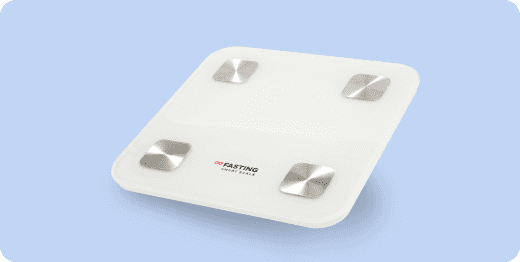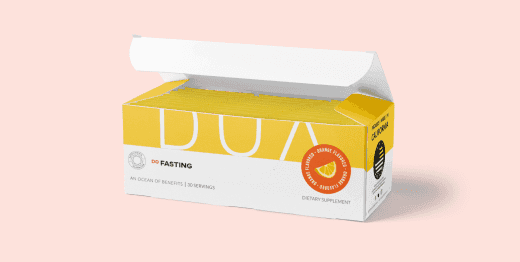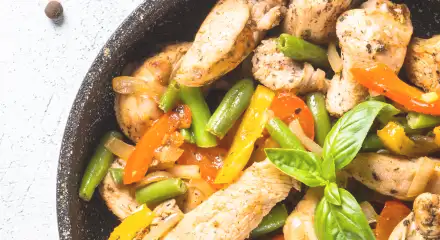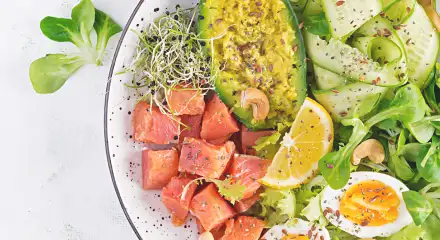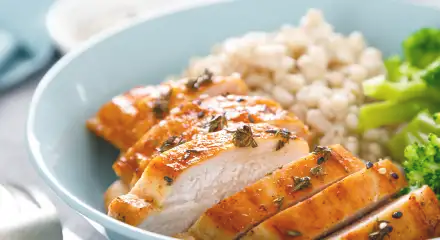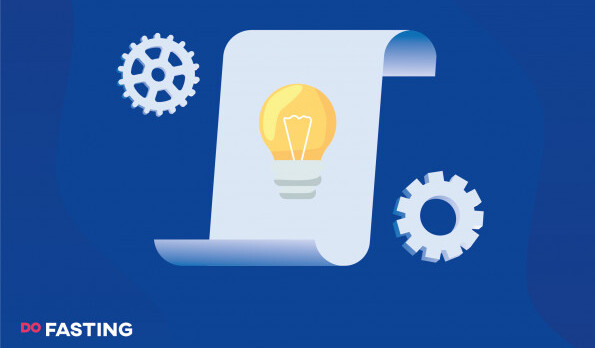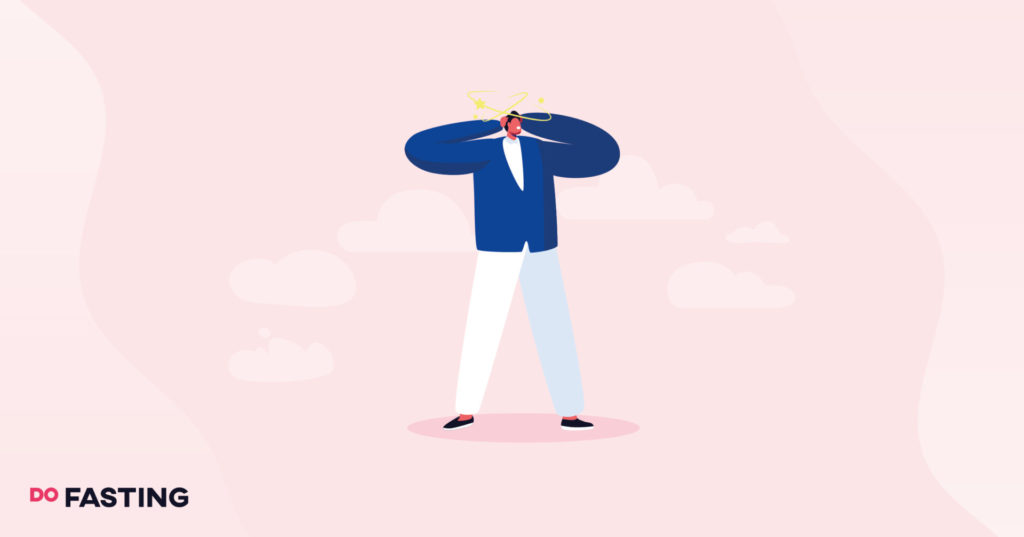Contents
What Is a Fat Fast?
Fat fasting is an interesting new diet that takes the basis of a standard ketogenic diet and transforms it into a rapid weight loss plan, thanks to a very low-carb diet with a high fat intake.
While the premise of the fat fast technique might seem counterproductive— the process of eating a high-fat diet in order to lose weight— it actually does have plenty of scientific merit to back it up.
First put forward by Dr. Atkins in his fat fasting book, New Diet Revolution, the fat fasting technique achieves such visible results by flipping the metabolic switch of a classic keto diet, in a much shorter time period.
Instead of putting your body into starvation mode, a fat fast helps you boost ketone levels by limiting high-carb foods that turn into blood sugar in your system, and relying on high-fat foods and protein intake to target body fat stores much quicker than a normal diet allows.
These ketones are essential for hormonal balances and boosting your metabolism towards burning fat instead of glycogen levels, or the blood sugar from carbohydrate intake that your body stores, just like within the classic keto diet.
This makes fat fasting a great method to breakthrough weight loss plateaus and get keto dieters back on track for rapid weight loss.
Fat fasting requires a person to eat 80 – 90% of their daily calories from fatty sources, including healthy fats like avocado, high-fat nuts, and fatty fish, among others.
And because you are relying on these foods, you end up eating only 1,000 – 2,000 calories in a day, which is really only sustainable for a period of 2 to 5 days. That being said, sticking to a fat fast diet does still allow 4 or 5 meals a day, kept under 250 calories each.
However, fat fasting for longer than 5 days is considered pushing your body into starvation mode, which sabotages any body fat loss track completely.
And, it actually encourages your metabolism to retain fat stores as energy, as your system doesn’t know when it will get a sufficient calorie intake again!
In general, 3 days of a fat fast is recommended for fat loss, pushing yourself back into ketosis, and overcoming any weight loss plateaus you might be experiencing.
Transitioning out of a fat fast is fairly easy, as well, particularly if you switch to a standard ketogenic diet— simply keep the dietary carbs down and raise the calories in a day that you eat, while still consuming plenty of high-fat foods to encourage some ketosis.
Take a
1-minute quiz
and discover how much weight you can lose with DoFasting!
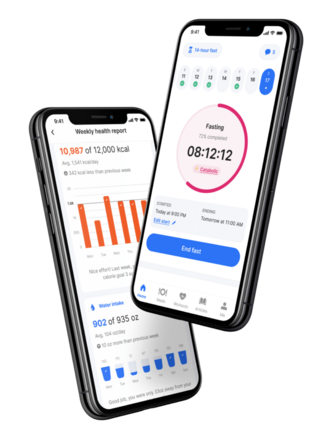
3 Main Benefits of a Fat Fast
As a form of weight loss, a fat fast is very effective. Even a 5% decrease in your overall body mass can lead to incredible health benefits, including lower risks of cardiovascular distress, reduced blood sugar, and an overall energy boost.
But when it comes to a fat fast, let’s go over some of the specific advantages that this form of diet brings, and why so many dieters choose a fat fast keto plan to kickstart better life changes.
Swift Weight Loss
It’s no wonder that many who are overweight turn to some of the most popular diet methods for help, including the ketogenic diet and intermittent fasting.
And as a near combination of the two, doing a fat fast promotes the creation of ketones in the liver, working to burn more fat than ever.
Not only do you shed water weight fast, but the fat burning associated with permanent weight loss is greatly enhanced. A fat fast essentially kick-starts your metabolism into ketosis, without having to wait for a calorie deficit to occur.
You could think of it as a nearly instant ketogenic diet— overloading the fat in your body to push ketones into immediate fat burning and very swift weight loss!
Breaks the Weight Loss Plateau
Most dieters have hit a weight loss plateau before, and understand how frustrating it is. And for many people, though they stick to a rigid diet, weight loss can stagnate and come to a halt, no matter how closely they follow the plan.
However, because a fat fast essentially does the work of the keto diet in a fraction of the time, it shocks your body into attacking fat stores instead of sugar levels and pushes your metabolism entirely into the state of ketosis.
This can successfully get you out of a rut and if you hit a weight loss plateau that you’ve been struggling with, putting you back on track for your goals.
Increasing Ketone Levels
As we have said, ketones are key to many metabolic processes and health benefits, including weight loss. But they can also be difficult to produce, especially in a body that still relies on burning glycogen and sugar levels for energy, instead of using up fat and lowering blood triglycerides.
One of the best ways to increase ketone levels is by reducing your calories a day, carb intake, and raising the high-fat content of your diet.
By combining these tenets of fasting and the keto diet, the ketone levels within your liver and the rest of your body are forced to multiply and enhance mitochondrial reactions and better the entire autonomic nervous system.
How Does Fat Fast Help Burn Fat?
We mentioned some of the scientific merits of the fat fast technique previously, but it’s important to understand exactly how this method affects the body and metabolic system to see how effective it truly is.
How does a low-calorie, high-fat diet help you lose weight and more importantly, burn fat? The answer is ketones.
Ketones are fuel created inside the liver that comes from a lack of carbohydrates going into the body, including through an intermittent fasting calorie deficit or the process of fat fasting.
In particular, an occurrence known as lipolysis is responsible for converting sugar and fatty acids that, once released, promote ketone creation. As such, ketosis and lipolysis are symbiotic processes in the body that work together for burning fat when your metabolism is boosted.
And because both processes require low-calorie, high-fat diet considerations, a fat fast keto plan is ideal for triggering this metabolic switch.
That’s why substances used in creating fat fast meals like olive oil, coconut oil, cream cheese, and full-fat bombs like blended coconut meat not only promote burning fat from the body but also leave you feeling energized and satisfied.
The ketones fueled by fatty acids give your entire system the boost you need to power through fat fasting and succeed!
What Can You Have During a Fat Fast?
A fast fat meal plan is fairly straightforward, especially when compared to any other ketogenic diet or intermittent fasting meal plan.
Because a fat fast mimics true intermittent fasting and the ketosis that a calorie deficit, low-carb diet, and time-restricted eating puts you into for weight loss, you have much more leeway in your daily calories and what you can actually eat.
Those on a fat fast eat a variety of tasty foods, with the freedom to be made from high-fat (and delicious) ingredients like macadamia nuts, heavy whipping cream, coconut milk, and cream cheese.
Let’s take a look at some of the foods that you should eat when doing a fat fast, as well as some food groups that you should not consume during it.
Foods You Should Consume When Following the Fat Fast
As previously mentioned, the fat fast meal plan primarily consists of three criteria: low-carbs, low-calories, and high-fat content in all meals a day that you eat.
And because you need to be consuming about 80% to 90% of your daily calorie intake in fat content, there will necessarily be a lot of rich and creamy ingredients, as well as high-protein foods to work into your meal plan!
Read on for a list of some food groups that are great to eat during a fat fast for weight loss:
- Drinks— Best beverages for a fat fast are plain water, sparkling water, coffee, and tea.
- High-Fat Dairy Products— Including heavy whipping cream, high-fat dairy cream cheese, high-fat sour cream, butter, ghee, and rich cheeses like brie and camembert.
- High-Fat Meats and Fatty Fish— Such as pork belly, lamb chops, bacon, sardines, salmon, and steak cuts like ribeye and New York strip.
- High-Fat Non-Dairy Products— Including eggs, coconut milk, coconut cream, and blended coconut meat.
- High-Fat Nuts— Like macadamia nuts, peanuts, and cashews.
- High-Fat Oils and Spreads— Such as mayonnaise, macadamia nut butter, unsweetened peanut butter, cashew butter, olive oil, coconut oil, avocado oil, MCT oil, chicken fat, duck fat, goose fat, and cocoa butter.
- Low-Carb Vegetables and High-Fat Fruits— Including spinach, zucchini, kale, avocados, and olives (preferably prepared with high-fat oils or spreads).
Foods To Avoid During Fat Fast
Any foods with a high sugar or carbohydrate content need to be avoided during a fat fast, as they will immediately push your body out of ketosis and prevent weight loss from continuing.
You should also avoid low-fat options and low-protein foods, due to their propensity to transform into glycogen in the body because of the lack of fat contained in them.
Other foods you should not consume during a fat fast include:
- Beans and Legumes.
- Cereals and Grains.
- Fruits and Citrus.
- Lean Meat and Fish.
- Low-Fat Dairy Products (skim milk, low-fat yogurt, low-fat cheese, and cream cheese or sour cream that is “light”).
- Sugary Foods or Baked Goods.
- Sweet Beverages (alcohol, energy drinks, juice, and sweetened coffee or tea).
4 Tips on How To Be Successful When Doing a Fat Fast
Any type of diet plan is difficult, from the ketogenic diet to intermittent fasting, and pursuing the fat fasting technique is certainly no different.
But the key to success is often found in the little things, so we have compiled a brief list of the top 4 tips and tricks for how you can transform your weight loss mission with a low-carbohydrate intake and fat fast.
-
Do Only Light Exercise
While physical activity is certainly important in your daily life and to lose weight, it’s also something that should be done in moderation during a fat fast. Keep in mind that your body is functioning primarily on the energy given by fat-induced ketones and not a typical amount of carbohydrate fuel it might be accustomed to.
As such, it’s still a good idea to keep your muscle mass working and burn more calories by completing light cardio during a fat fast, but nothing strenuous. Things like walking, yoga, and low-intensity exercise are suitable during a fat fast, but high-intensity workouts should wait for later.
Because these exercises are low-intensity, you mitigate the risk of overdoing your body’s calorie-burning capabilities, and making your metabolism think that you are headed into starvation mode which would make it retain more fat!
-
Get an App to Track Everything
It can be confusing to keep track of the calories a day that you eat— and even downright annoying!
That’s why we recommend using a diet app for your smartphone to keep accountable and utilize the best of technology to help you succeed on your weight loss journey, no matter the type of diet you embark on.
Take the DoFasting app, for example— you can log calorie intake, water units, exercise levels, and so much more. The personalized information generated by the app puts you back on track to losing as much weight as is safe for your body composition, as comfortably as possible.
Plus, you can find a variety of great fat fast recipes and workout routines for every level of physical activity, right at your fingertips!
Take a
1-minute quiz
and discover how much weight you can lose with DoFasting!

-
Take Vitamins
Essential nutrients can sometimes be difficult to balance with a strict diet, but vitamins need to be part of your daily meal planning.
Because a fasting meal plan does limit the types and amount of food you can eat, it’s likely that your nutrient consumption is also affected. Thus, taking supplements and vitamins is important to keep you healthy!
-
Before Trying Fat Fast, Try Keto Diet
The ketogenic diet is popular with many people, but fewer individuals tend to opt for the more intense version— fat fasting.
So, if you want to give it a shot, it’s wise to ease into the process by starting off with a standard keto diet schedule until your body gets used to it, as it will also help prevent keto flu, which is where the metabolism is overly shocked by diving into fat fasting or extreme keto and produces very flu-like symptoms!
3 Day Fat Fasting Meal Plan Example
For many keto dieters, a fat fast meal plan is very easy to prepare, due to the fairly wide range of ingredients and essential nutrients that come from high-fat products that are available to them.
The main two considerations are keeping your net carbs minimal for each meal a day that you eat and primarily relying on foods that come from fat sources.
And as long as your low-calorie threshold is not exceeded, your meals can be delicious while still burning more than just a few pounds!
Read on for suggestions of how to prepare a low-carb meal that still has enough fat content and a variety of vegetables and protein to keep you feeling satisfied throughout 5 meals a day.
Keep in mind that these are just example meals, and you can either switch up ingredients to some degree or find a variety of new recipes to try, while still sticking below the 1,000 – 2,000 calories a day limit.
And for even more meal ideas, check out over 5,000 recipes available on the DoFasting app!
Day 1
Start your day with a cup of caffeine that is still acceptable for keto— 1 cup of Bulletproof Coffee. It uses a mixture of butter and MCT oil that helps break down fat cells to keep you losing weight and alert at the same time!
Then, move into the meals planned for your day, such as:
- Deviled Eggs with Salmon, 1 serving (Calories: 366; Fats: 29.7 g; Carbs: 4.9 g; Protein: 20.8 g).
- Keto Pork Bacon with Brussel Sprouts, 2 servings (Calories: 451; Fats: 35.9 g; Carbs: 8 g; Protein: 24.1 g).
- Ham and Cream Cheese with Spinach Roll, 1 serving (Calories: 256; Fats: 21.6 g; Carbs: 3.9 g; Protein: 16.4 g).
Day 2
Don’t forget to drink plenty of water throughout your day when fat fasting, as it will help break up the high-saturation content of fat bombs and assist your body in processing it quicker!
Day 2 might consist of:
- Bulletproof Coffee, 1 cup.
- Avocado Breakfast Boats, 1 serving (Calories: 375; Fats: 30.8 g; Carbs: 9.4 g; Protein: 17.3 g).
- Keto Meatballs, 2 servings (Calories: 331; Fats: 22.9 g; Carbs: 8.1 g; Protein: 23 g).
- Smoked Salmon Rolls with Cream Cheese, 1 serving (Calories: 265; Fats: 20.6 g; Carbs: 4.7 g; Protein: 15.5 g).
Day 3
And finally, the third day of your fat fast might see you eating meals like:
- Bulletproof Coffee, 1 cup.
- Fried Eggs with Kale and Bacon, 1 serving (Calories: 292.5; Fats: 24.9 g; Carbs: 1.6 g; Protein: 13.8 g).
- Cheddar Cheese Tacos, 2 servings (Calories: 477; Fats: 33.3 g; Carbs: 8.2 g; Protein: 35.6 g).
- Cod with Coconut Sauce, 1 serving (Calories: 433; Fats: 35 g; Carbs: 5.1 g; Protein: 27.1 g).
Should You Try Fat Fasting?
As previously discussed, a fat fast can be one of the best ways to kick start your metabolism and boost your weight loss success. And for some dieters, in particular, using this method is very effective.
Hit Weight Loss Plateau
Because it’s so effective at pushing your body into ketosis, and everything you eat just promotes that process even further, fat fasting shocks your body out of a weight loss plateau and gets it back into its full fat-burning potential.
After A Cheat Day
Plenty of dieters work a cheat day into their week, as a way to still enjoy some foods that are not “healthy” or that fit into their diet plan.
And fat fasting quickly gets your body back into ketosis after a cheat day, mitigating some of the effects of a high-carb intake. Instead of feeling bad about a prior cheat day with more calories and carbohydrates than normal, you can use a fat fast to effectively restart your metabolism.
Have Tried the Ketogenic Diet Before
For many keto dieters around the world, this method is the best they’ve found. The keto diet can undoubtedly be effective if you do it right, and one step towards further weight loss from a low-carb keto plan is the fat fast.
It does follow many of the same principles, including low-carb meals, restricting calories, and promoting high-fat foods— so if you are familiar with the keto diet, fat fasting might be the right path for you!
What Are the Drawbacks of a Fat Fast?
Unfortunately, fat fasting is not a miracle diet that has all positives. Like any other diet plan, it does have certain disadvantages for anyone who wants to try it, so we’ll take a moment here to discuss them.
After all, the better prepared you are going into a diet, the more likely you are to succeed, and fat fasting is no different!
It Causes Micronutrient Deficiencies
Because dieting in general and doing a fat fast necessarily restricts the types and amounts of food you can eat, it runs the risk of essential nutrients being overlooked.
For example, Vitamin C, Vitamin D, and calcium are all parts of a normal diet that experience compromised levels due to strict changes in meals, so supporting your fat fast with the proper vitamin and nutrient supplements is important.
Fat Fast Leads to Muscle Mass Loss
Though this is not guaranteed to happen, particularly if you persist with a low-intensity exercise regimen during the process, the reality is that fasting does not leave you with as much tappable energy for physical exertion.
Additionally, losing weight not only targets fat cells on their own but muscle tone and fibers, as well.
To avoid this, ensure you add light exercise to your daily routine, including moderate strength training. That way, as you lose fat, you will retain more muscle mass in the end.
Not Sustainable for Long-Term Weight Loss
As mentioned in the beginning, experts recommend only fat fasting for 2 to 5 days, with 3 days being the best option for many people. As such, it is not a tenable long-term weight loss plan and needs to be interspersed with other diet methods, like keto or intermittent fasting.
While short-term fat fasts are suitable for your health, extending it will have an adverse effect on weight loss and your wellbeing in general— that is because these meal plans do not have enough calories or nutrient diversity to sustain you for a long period.
Decreased BMR
Your BMR, or basal metabolic rate, refers to the number of calories that you require to sustain basic body functions. And while each person has a slightly different rate, based on body composition, genetic history, and physical activity levels, it’s a requirement common to all humans.
However, when you lose weight too quickly or decrease your calorie intake drastically, it can lower your BMR and have negative effects on your body. It might cause your daily functions to become labored and slow your entire metabolism down, leaving you with listlessness, low energy, and reduced weight loss.
Lost Fat Comes Back
Rapid weight loss is not recommended for sustained weight management, so one must be careful when fat fasting. Not only does the metabolism tend to suffer after a sudden weight loss, but it could even damage your metabolic processes for future fat-burning endeavors.
Plus, going hungry for an extended period is likely to make people overeat when they have finished their diet, often causing rapid weight gain all over again, even up to 40-50% of the original loss.
Instead, try taking weight loss at a slower and steady rate— in the end, it will be better for your overall health, metabolic system, and energy levels.
Is Fat Fasting for Everyone?
Much like the standard ketogenic diet, fat fasting can be a safe and efficient way to lose water weight, burn fat, and ultimately smash your weight loss. However, even the keto diet is unsuitable for certain persons, and the same applies to fat fasting.
So, if you fall under any of the following categories of people, fat fasting might not be suitable for you, and you should consult with a medical professional for advice before starting the ketogenic diet, fat fasting, or a strict calorie deficit plan:
- A history of eating disorders.
- Below the age of 18.
- Breastfeeding or pregnant.
- Diabetics or those struggling with high blood sugar.
- Insomniacs.
- Pre-existing conditions.
- Taking certain prescription medications.
- Those at risk for cardiac issues.
Conclusion
Among the many options for dieting and weight loss, fat fasting is one of the most successful methods.
As an intersection between the ketogenic diet and intermittent fasting, it relies on low-carb, high-fat meals with a reduced daily calorie intake to spark ketosis in the body and target fat stores for elimination.
And while fat fasting can be a great way to lose weight and see results, there are still some tips and tricks for doing it right, planning your meals well, and achieving success in your end weight goals.
Take a
1-minute quiz
and discover how much weight you can lose with DoFasting!

See how DoFasting will improve your life
Find out what works for you with this 60-sec quiz approved by our experts and get your personal revolutionary fasting assistant.
Start the Quiz

